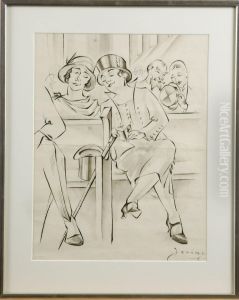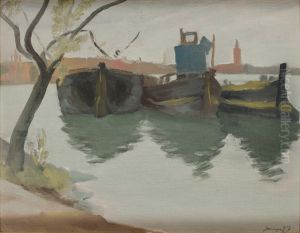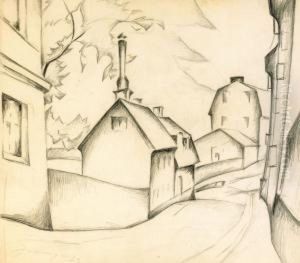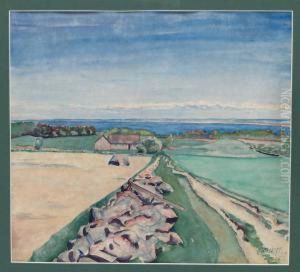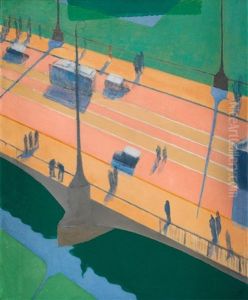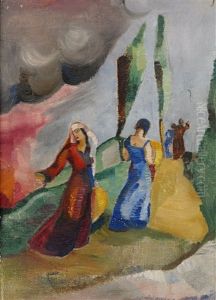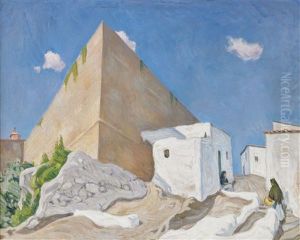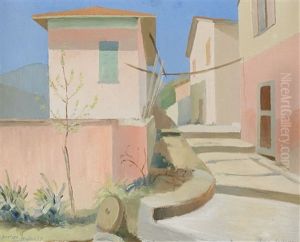Torsten Jovinge Paintings
Torsten Jovinge was a Swedish artist and painter, born in 1905 in the town of Halmstad, Sweden. Associated with the Halmstad Group (Halmstadgruppen), which he co-founded along with artists such as Erik Olson and Axel Olson, Jovinge played a significant role in introducing modernist artistic movements, such as Surrealism and Cubism, to Swedish art.
Jovinge's early work reflected a conventional approach, typical of the time, but his exposure to avant-garde movements in the European art scene heavily influenced his later work. He was particularly impressed by the Parisian art scene, where he spent some time and absorbed contemporary artistic ideas. His art began to display the characteristics of these movements, blending imaginative surrealistic elements with a strong sense of composition and color.
Despite his involvement with modernist movements, Jovinge never abandoned the Swedish landscape as his primary subject. He managed to merge the traditional with the modern by incorporating the serene and reflective qualities of the Swedish environment with the abstract and often disjointed forms of modern art. His landscapes are often characterized by a dreamlike quality, with a subtle interplay of light and shadow, and an innovative use of color and form.
Throughout his career, Torsten Jovinge exhibited his work in Sweden and abroad, contributing to the spread of modern art within Sweden and helping to establish the Halmstad Group as a significant force in Swedish cultural life. His work is represented in various Swedish museums and collections.
Jovinge's contributions to art were not only through his paintings but also through his teaching. He influenced a new generation of Swedish artists, sharing his knowledge and passion for modern artistic expression. Torsten Jovinge passed away in 1977, leaving behind a legacy of artistic innovation and a body of work that continues to be appreciated for its originality and its bridging of Swedish traditions with international modernism.









